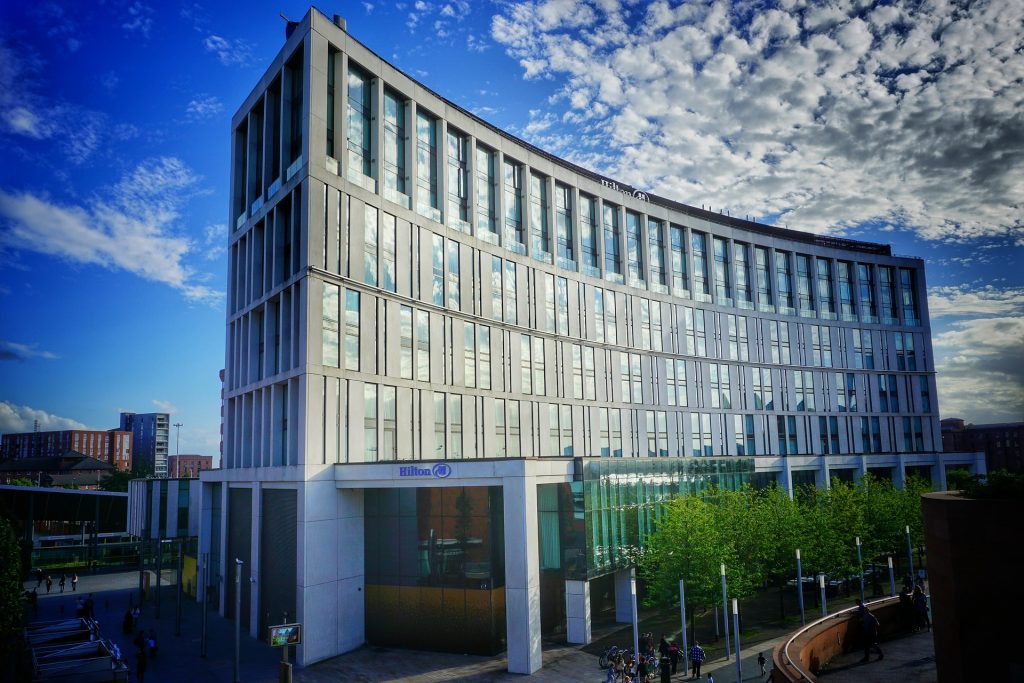
A study of structure fires in hotels and motels, compiled by NFPA in 2015, however, estimated the average annual number of fires in the U.S. at 3,520 (2009-2013). These fires resulted in an annual loss of nine civilian lives and injury to 120, along with direct property damage of $84 million.
In recognition of the need for protection, the adopted building and fire codes generally provide a mandate for the installation of various features of fire protection within such facilities. These might include, but are not limited to: fire alarms, fire sprinklers, standpipes, fire pumps, smoke exhaust, fire extinguishers, fire-rated construction, means of egress features, kitchen hood fire suppression, etc. The extent of such features is dictated by the building size and height, construction type, number of stories, occupant load, etc.
While not generally considered by many prospective guests as a deciding factor in their choice of accommodations, it is imperative that we uphold the obligation to maintain fire protection systems/features in an operable condition. To that end, there are several applicable codes and standards that dictate inspection, testing and maintenance of such protection. These include, but are not limited to: NFPA 25 for the IT&M of water-based fire protection systems (fire sprinklers, standpipes, hydrants, fire pumps, etc.), NFPA 72 for the IT&M of fire alarm systems, NFPA 10 for the IT&M of fire extinguishers, NFPA 96 and 17A for IT&M of kitchen hood systems, NFPA 1, NFPA 80, NFPA 101, NFPA 105 and the International Fire Code (IFC) for the IT&M of fire/smoke-rated walls/doors and means of egress components/emergency lighting, and NFPA 92 for the IT&M of smoke control systems.
Each of the codes and standards provides a variety of IT&M activities that must be completed for the wide range of installed fire protection system components. The frequency of such required work activities varies, with specific items being mandated daily, weekly, monthly, quarterly, annually, 3-year, 5-year, 10-year, etc.
The overall responsibility to have all of this work completed falls directly upon the facility owner to ensure the adequacy of the protection within the facility, however, it is quite common and necessary in some cases due to licensure laws, to contract with a fire protection service provider to complete some or all of this IT&M work. It is not uncommon for a service provider to be contracted to complete only a portion of the required IT&M work by these codes and standards, with the balance remaining the responsibility of the facility owner. There might not always be a clear understanding, however, of where the designation of responsibility limits begins and ends for each party. In a number of cases, the level of compliance enforcement applied by the local AHJ (fire official) varies significantly, which results in a varying level of attention to completion of such work. All too often, the expectation of the facility is that the service provider did their annual visit last month, so they are “all good.”

More importantly, it would be beneficial to direct ongoing attention to fire protection systems in the same manner that one might focus on the features of the facility that provide for comfort of the guests, such as amenity operability, cleanliness of rooms, heating/cooling systems, hot water, facility lighting, secure premises, etc.
As the facility operation staff goes about their day to day duties aimed at maintaining a clean, comfortable, safe environment for their guests, each one of them should also be mindful of the condition of the fire protection system components and features, bringing the same attention to those items in need for repair to those in responsible charge as would be done with those items associated with guest comfort or facility operability. With a focus on installed water-based fire protection systems (fire sprinklers, standpipes, fire pumps) and fire alarm systems, there are a number of such things that can fall easily within this category:
Hotel Staff Fire Protection Inspections of Sprinkler/Standpipe Systems
- Visually examine that sprinklers are not leaking, damaged, loaded, corroded, painted, or obstructed
- Visually examine that piping/fittings are free of leakage or detrimental corrosion/damage
- Visually examine that all system control valves are in the open position
- Visually examine that all areas containing water filled piping are adequately heated ≥40°F when weather conditions present freezing potential
- Visually examine appropriate water and air pressure on system risers
- Visually examine that all system control valves are in the open position
- Visually examine that all areas containing water filled piping are adequately heated ≥40°F when weather conditions present freezing potential
- Visually examine that fire pump controller is powered up and in the auto position, and that no trouble conditions exist on the controller
- Conduct a weekly/monthly no flow test on the fire pump as appropriate to the type of installed fire pump (electric/diesel) with necessary visual observations of the operating condition
- Visually examine fire alarm panel to ensure the unit is not damage, blocked and does not include any off-normal operating conditions
- Visually examine the detection devices (pull stations, smoke, heat, etc.) to ensure they are not damaged, blocked or otherwise rendered inoperable
- Facility maintenance personnel available to assist the service provider is required – Given the nature of a facility and potential for inaccessible guest rooms at the time of the visit, multiple site visits might be needed to ensure complete coverage
- Fire alarm panel codes, keys, etc. ready and available
- Coordinate with the elevator inspection service provider on the same day as the fire protection system IT&M to complete a coordinated test between both providers
- Assist in notifying guests when conducting testing, including sounding of alarms, along with notification of the completion of testing
Hotel Staff Inspection of Fire Pumps
Hotel Staff Fire Protection Inspections of Fire Alarm System
Both the service provider and the facility are responsible for ensuring a coordinated effort in conducting the periodic IT&M work within the facility. It should be expected that the service provider schedule in advance with the facility to ensure the facility is aware of the systems involved and to minimize disruption to the facility and guests. In preparation for the IT&M visit, the facility is advised to have the necessary information, support personnel and access available for completion of the IT&M work:
The prompt correction of any deficiencies discovered as either part of the ongoing attention to the condition of the installed systems or during those IT&M activities provided by a service provider are imperative. Proper IT&M of the fire protection systems/features for the facility is essential to managing the overall level of risk to the facility and its occupants. The completion of this task represents an ongoing, coordinated effort between the facility owner and the service provider to ensure the required protection of facility, business and, most importantly, guests meet with the minimum provisions of the mandated standards, as well as rising to the same standard of excellence expected for the comfort and satisfaction of their stay.
About the Author, Tracey Bellamy

About Telgian
Since 1985, Telgian has served as a trusted partner to clients around the globe, providing comprehensive fire and life safety systems testing and inspections, as well as fire, life safety and security engineering, consulting / design services. Telgian keeps facilities safe, compliant and on budget while protecting people, property, information and organizational mission against preventable losses.
Headquartered in Phoenix, Arizona with offices across the nation, Telgian provides Fire Protection Systems Inspections to approximately 50,000 locations annually throughout the US and abroad.
For more information about Fire Protection Systems Inspections, please contact:
Steve Goyette
Vice President, Business Development
office 480-656-3110
email sgoyette@telgian.com